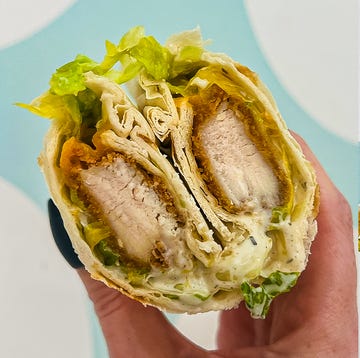We already knew Meghan Markle and Prince Harry's wedding cake would be totally different from any other royal dessert we've ever seen when Kensington Palace made its inital announcement in March that they'd be serving lemon elderflower cake decorated with buttercream and fresh flowers instead of a traditional fruitcake.
But now that we have the first look at the cake served at the Queen's luncheon reception at Windsor Castle today, it's not just the ingredients and decorations that make it untraditional, but also the entire cake's shape, too.
The baker Claire Ptak, who owns East London's Violet Bakery, told The Telegraph earlier this week that instead of building the lemon and elderflower cake in traditional tiers, she'd be building it in three parts of varying sizes.
"It's an installation of the way that we're putting it out. It's the last thing that we'll reveal. It's a non-traditional layout," Ptak told The Telegraph. "It's a slight shift from tradition."
Made with elderflower syrup from the Queen’s Sandringham estate’s own elderflower trees, the cake features two one-tier cakes and one two-tier cake decorated with peonies, garden roses and greenery. Each cake is displayed on its own golden pedestal.
Even though serving un-stacked tiers of wedding cake is a total departure from the tiered fruitcakes traditionally served at royal weddings, this trend has caught on in the U.S. in recent years.
Here's a few other wedding cakes built in this style that possibly inspired today's royal dessert:
Ptak and her team of six bakers worked full time in the Buckingham Palace kitchens for five days to prepare Harry and Meghan's royal wedding cake.
But before she and her team got to work, Ptak also said that Harry and Meghan tasted several different cake samples prior to picking the lemon and elderflower combination.
"They loved it. They tried quite a collection," Ptak told The Telegraph. "What they said to me is that they really loved the idea of the seasonality and the freshness."
Follow Delish on Instagram.













